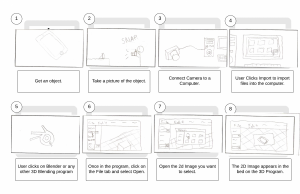www.vitaljacket.com
Project 1 – Vital Jacket
Creater – Avenida D Afonso Henriques
A suit that tracks your body as you move. The suit will track your bodie’s heart and monitors it before storing the data for about 72 hours. The input is the person. The person wears the suit and the suit tracks their motion as they walk, run or do something that tracks your heart to monitor it. This is a great way to monitor your heart as you go about your daily life. The output is the data that is stored based on the data created by the suit. The output is a small hardware box that has all the data stored in a small pocket of the suit.
The suit has exposable elctrodes that connected in the suit to the hardware box. The electrodes then send the data to the box to store it for 72 hours. The artist(s) is trying to help people monitor the their hearts to make sure nothing is wrong as they go about their daily lives. This can help doctors know about their patients heart condition and a great opportunity to determine early cases of heart disease. Plus its fashionable. The technology allows the suit feel comfortable to not put stress on the heart and avoid wrongful data. The suit allows users to monitor their heart to stay healthy. This is used as a fashion sense and a relief to enjoy their lives.
Video: https://youtube.com/watch?v=c2c-y3VRSPA
Project 2 – Flip Deck
Creator: Vincent Leclerc
Link: vincenteclerc.com/flip
The Flip Deck is a skateboard that takes people’s emotions and turn them into dynami interfaces. It alows to display animation that give off motion and speed using LED lights. The input is the persons emotion. By touching the board, the sensor and circuitry will then sense the person’s emotion to light up the LEDs. The ouput is the LEDs that flash andight up based on the input.
There is a circuitry embedded into the skateboard and it is connected to an 802.154 radio. They also have flip-flop gates. I think the artist is trying to show what kind of emotion the prson is experiencing and usng that to create a small light show. The entire project focuses on the mood of the person. If its a strong emotion, the lights will flash faster and stronger than a weaker emotion. The artists wants to try and express a person’s emotion in some sort of art form.
Project 3 – E-Static Shadows
Creator : Dr. Zane Berzina and Professor Janis Jeffries
www.zaneberzina.com/e-staticshadows.htm
E-Static Shadows are the exploration of static electricity surrounding our interaction with everything around us. By detecting, processing and displaying electrostatic charges as audio- visual patterns on texture. The input of this project is humaninteraction with the e-static shadow. Touching the project will allow e project to interat with the person. The ouput of the project is the LEDs. The LEDs are patterns that are form whenever a person interacts with the e-static shadows.
The entire project is conncted all with circuitry. The static produced by us connects with the circuitry to light up the LEDs. I think the arist is trying to tell us that by using the staic that courses on our body to create art using LEDs. This gives us creativity using static as our utensil. I think the projct is trying to give us a happy mood that helps them with creating art. This hopefully will relieve stress and just to have fun.




